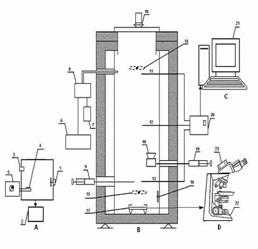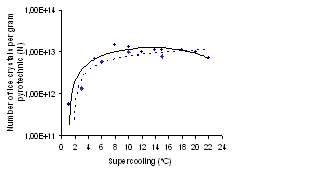| |
NATIONAL INSTITUTE OF METEREOLOGY AND HYDROLOGY - branch PLOVDIV
branch Plovdiv of the NIMH was established as a Regional Hydrometeorological Office in Plovdiv in 1951. In 1954 it already is a Regional Administration of Meteorology and Hydrology set in Plovdiv.
In 2007 branch Plovdiv staff consists of: 134 permanently appointed employees, including 37 have higher education, of whom 2 are doctors and 4 research associates; 70 have secondary specialized education; 24 have secondary education and two have elementary education.
branch Plovdiv is situated at the catchment basin of the rivers Maritsa, Tundzha and Arda at an areas of 33 000 kmІ and occupying a bigger part of the Tracian Lowland, the mountains of Sredna Gora, Rodopi and Sakar. In the south it borders Turkey and Greece, in the west – the catchment basin of the River Mesta and in the east – the catchment basin of the River Tundzha.
In the area of branch Plovdiv work some of the most long-standing meteorological stations: Elhovo (1899), Kazanlak (1888), Plovdiv (1891), Sliven (1889), Chirpan (1896), etc.
The major activity of the branch is building, exploitation and control of stations and points for observing the weather, waters, agro-climate conditions, chemical and radiation pollution of the air, rain and subsoil waters; giving warnings of the coming of health and life threatening hydrometeorological phenomena; issuing regional synoptic and hydrological weather forecasts and prognoses of rivers water level up to 72 hours in advance; making expert assessments of the weather and rivers parameters as well as specialized assessments of the ice- forming activity of pyrotechnic composition used in anti-hail defense in Bulgaria.
Observing network \in 2007\
Meteorological network – responds for 9 synoptic stations, 27 climate stations, 75 rain-measuring stations, 9 agro-stations, 17 phenologic points, set in 8 administrative areas.
The agro-climate network measures soil dampness and temperature at a depth of 200 cm at 9 points; regular observations of the phenophases are made at 17 points.
Hydrologic network – data of river levels and water quantities are gathered at 61 hydrologic stations and the level of subsoil waters at 118 hydrologic stations.
network for monitoring chemical and radiation pollution of the air, rain and subsoil waters:
1. Radiation gamma background from thirteen points in Southern Bulgaria; dry atmospheric precipitations at three points (Plovdiv, Elhovo, Rozhen); monthly fallout at one point (Plovdiv). The laboratory has a certificate by the standard EN ISO/ IEC 17025:2006 for accreditation issued by the Bulgarian Accreditation Service (BAS) N175LI, order N23/16.04.07 valid until 30.04.2011 for taking samples and testing waters, air, soils, building materials, food products, plant ad animal products, cigarettes, tobacco, etc.
2. Chemical pollution (nitrates, sulphates, electrical conductivity) and pH of rains at 12 points in Southern Bulgaria as well as air quality at one point in Plovdiv.
This is a system which gathers data of the climate of Southern Bulgaria by methods of the World Meteorological Organization – climate system. Recently, efforts are made to collect data for the rivers levels and the quantity of rains in real time – informational system. For this purpose are installed 9 automatic meteorological and 5 hydrologic stations, 13 automatic rain-measuring and 1 automatic agro-climate.
The data from the network and the points are collected daily in a Local Data Base via original, own communication methods. The data are kept, processed and visualized by original methods developed in the “Data Base and web site” section at the branch Plovdiv.
Employees of the branch are part-time collaborates at the Agricultural University – Plovdiv, Ecology and Environmental College – Plovdiv.
branch Plovdiv maintains a web-site (https://plovdiv.meteo.bg), which was visited in 2007 by England 21 716 times, the USA - 10 647 times, Greece - 1 063 times, etc.
The branch Plovdiv’s activity by contract for 2007 is 210 000 leva with Value Added Tax.
Major contracts fulfilled during the period 2006 - 2007:
- A contract funded by PHARE via the Ministry of Regional Development, code 2003/005-632-02.01.002 - “Flooding at the River Maritsa basin: analysis of the risk and mobilization of the informational resources for decreasing the effect of floods at the border region of Bulgaria – Turkey”;
- A contract funded by PHARE via the Ministry of Regional Development, code 2005/017-453-01.01.01 – “Improving the capacity of predicting floods at the Bulgarian – Turkish border region”;
- A contract funded by the National Electric Company – Sofia N 1061/2006 - “Short-term prognosis of the feeder in the cascade of the Arda River”.
Major publications during 2007 are:
- Konstantinov P., Agopyan M., Agopyan T., “Methods and results in analyzing the ice-forming activity of pyrotechnic composition used in weather modification”, Ninth WMO Sci. Conf. on weather modification, Antalya, Turkey, 22- 24 Oct, WMOTD N1406, 2007
- Konstantinov P., “Research of the conditions for crystals formation in the atmosphere in Bulgaria”, Ninth WMO Sci. Conf. on weather modification, Antalya, Turkey, 22- 24 Oct, WMOTD N1406, 2007
- E. Artinyan, F. Habets, J. Noilhan, E. Ledoux, D. Dimitrov, E. Martin and P. Le Moigne, 2007: Modelling the water budget and the riverflows of the Maritsa basin in Bulgaria.Hydrol. Earth Syst. Sci., 12, 21-37, 2008
- Chervenkov H., “Assesement of material deterioration in Bulgaria owing to air pollution”, Int. I. Environment and pollution, vol.31, N3/4, pp. 358- 393, 2007
 |
 |
a) |
b) |
Fig.1. Device for measurement of the productivity of ice-forming compositions (a)
Productivity N per gram of pyrotechnic composition of 12.6% AgI content independently tested in the NIMH and CAO laboratories (dotted line) in 2004 (b)
Figure 2. Freezing chambers, constructed in NIMH branch Plovdiv:
for millimeter’s drops (a) and micron’s droplets (b)

Figure3. Diagnostic (in blue color) and six consecutive prognostic discharge series [m3/sec] computed by the system for Arda river at Suhovo village (inflow of Kurdzhali reservoir) for the period from 9.11.2007 to 23.11.2007.


 REFERENCE REFERENCE
to
“National Institute of Meteorology and Hydrology – branch Plovdiv”
Current reference aims at assuring that the specialists of NIMH under the guidance of Dr. Eram Artinyan developed as contracted by contract ? 1067/2006 with NEC Plc. the following:
- Informational system integrating the hydro-meteorological observations led by NIMH and NEC Plc. in the Arda River basin. The system includes: control, harmonization, spatial and temporal interpolations, interface to an end user as well as to forecasting computerized algorithms;
- Automated machining and interface of digital meteorological information with a high resolution of the rainfall, air temperature, etc. to forecasting computerized algorithms;
- Methods of short-term forecasting of the water flow at the Arda cascade. The method includes stair-like forecasting scheme using as entrance information diagnostic meteorological information or prognostic such as it gives results with high reliability and up to 3 days preliminary.
- System of operational stair-like forecasting of the water flow at the Arda cascade with a period of 3 days, as the last is updated every 12 hours and is delivered to NEC Plc. for the needs of the optimal management of the cascade and maximum usage of the available water masses for the production of electric energy.
NEC Plc. accepted the results of the “Methodic” and the “Informational system” with a positive assessment and approved the beginning of the 4-year long exploitation of the system.
Up to current moment the latter works reliably and with no collapses becoming a daily tool for the management of the cascade.
MANAGING DIRECTOR:
/Mardik Papazyan/

|
|






